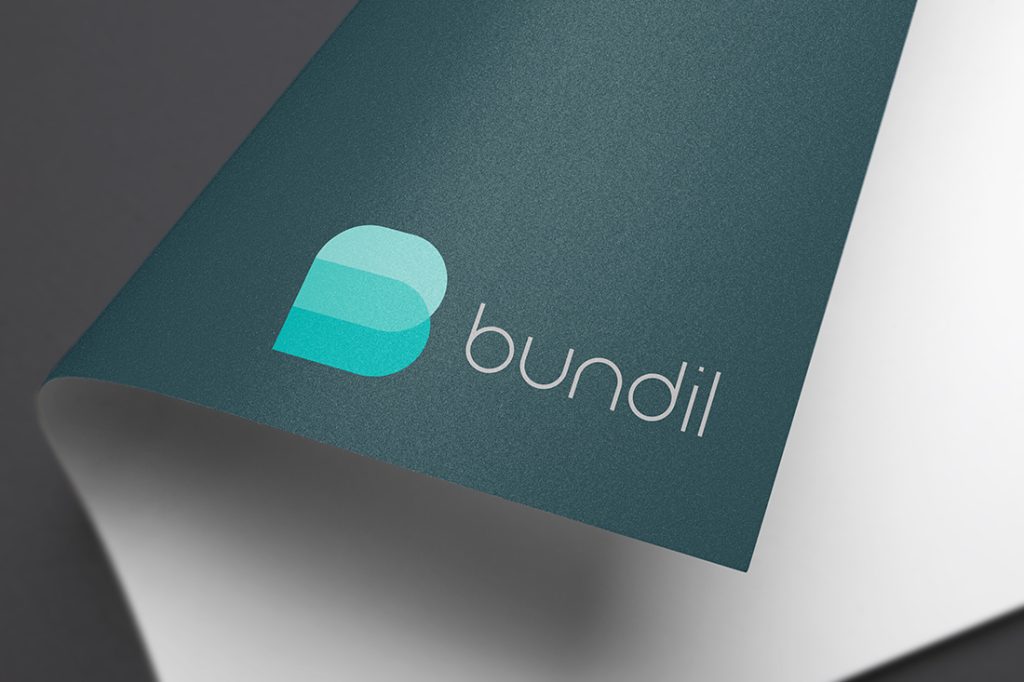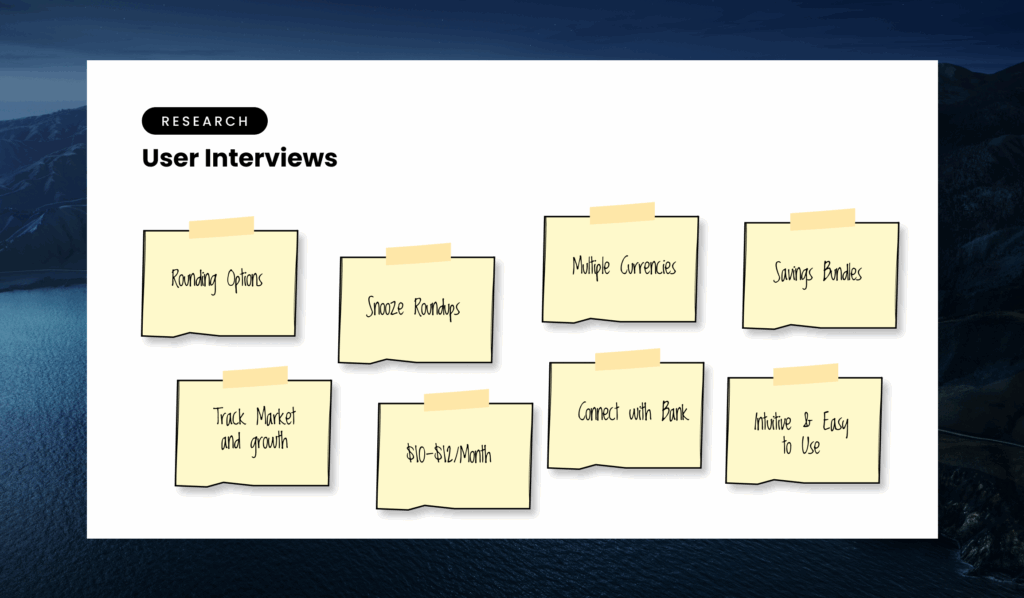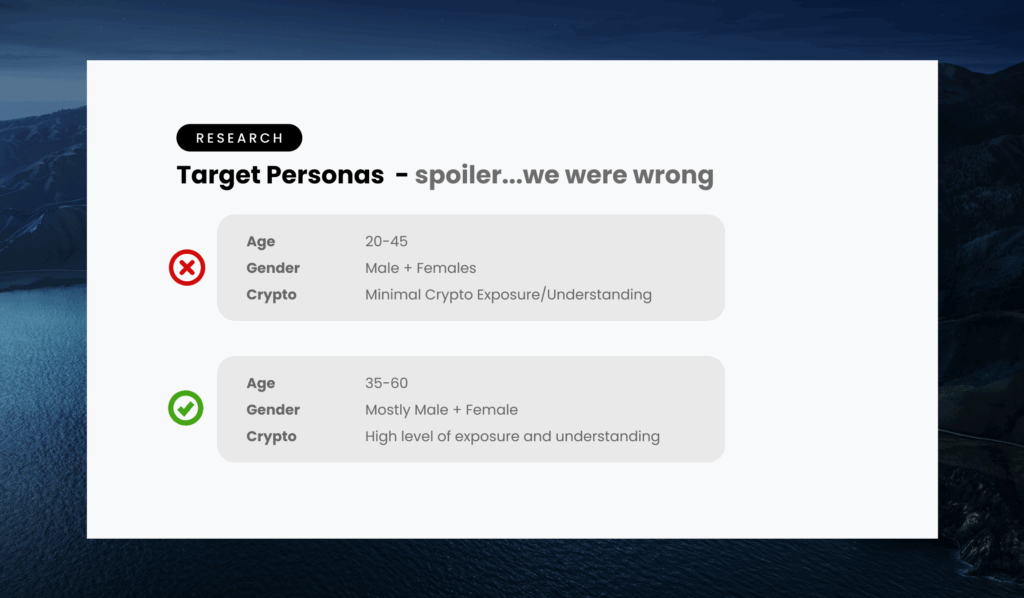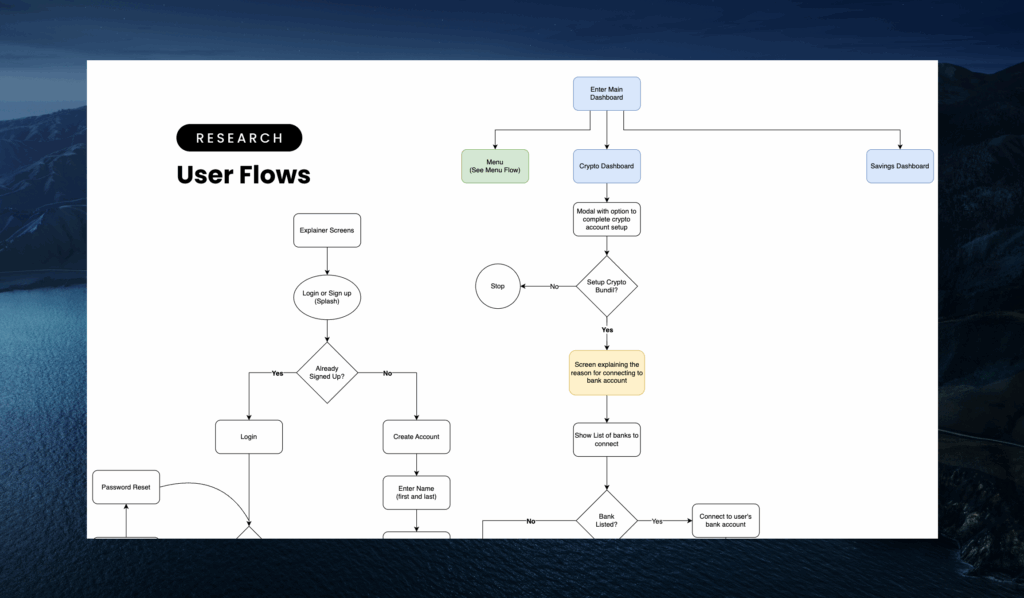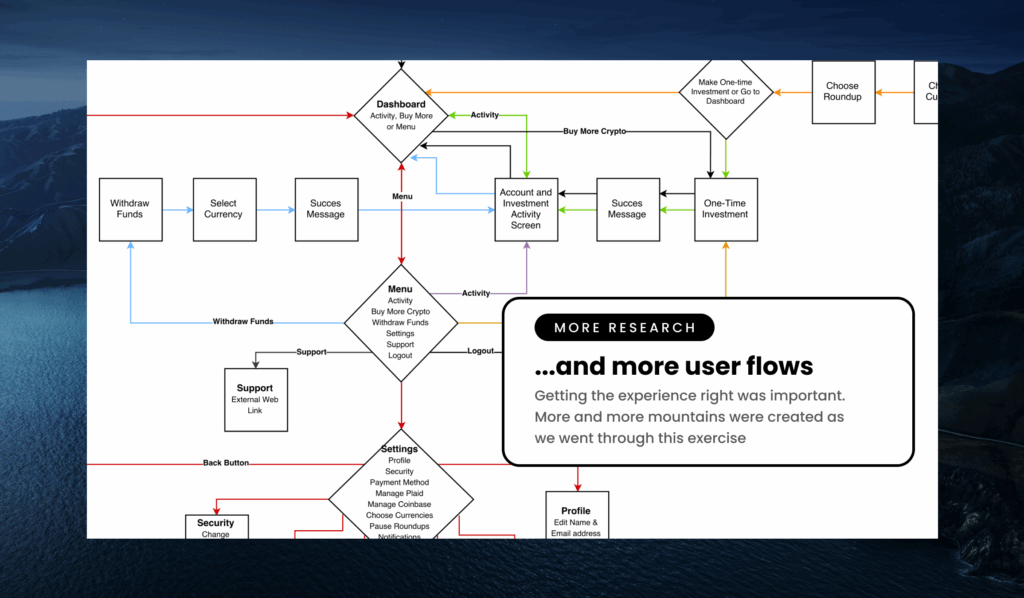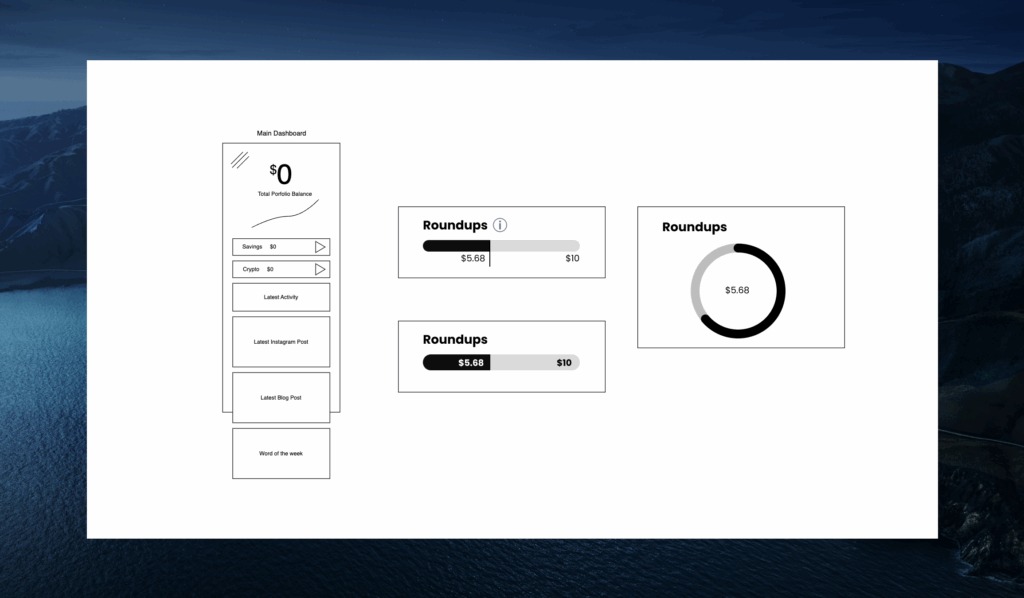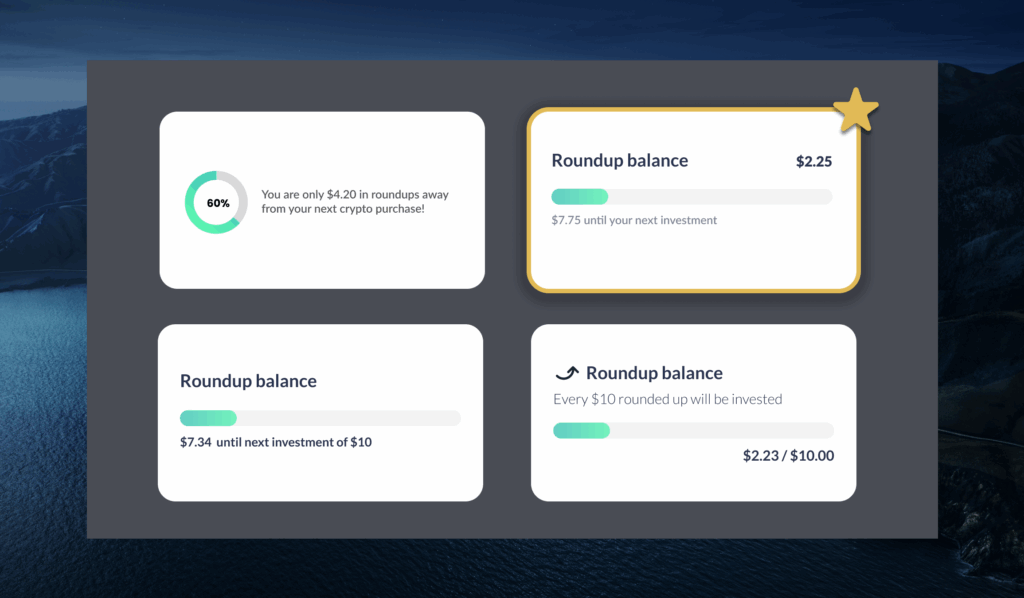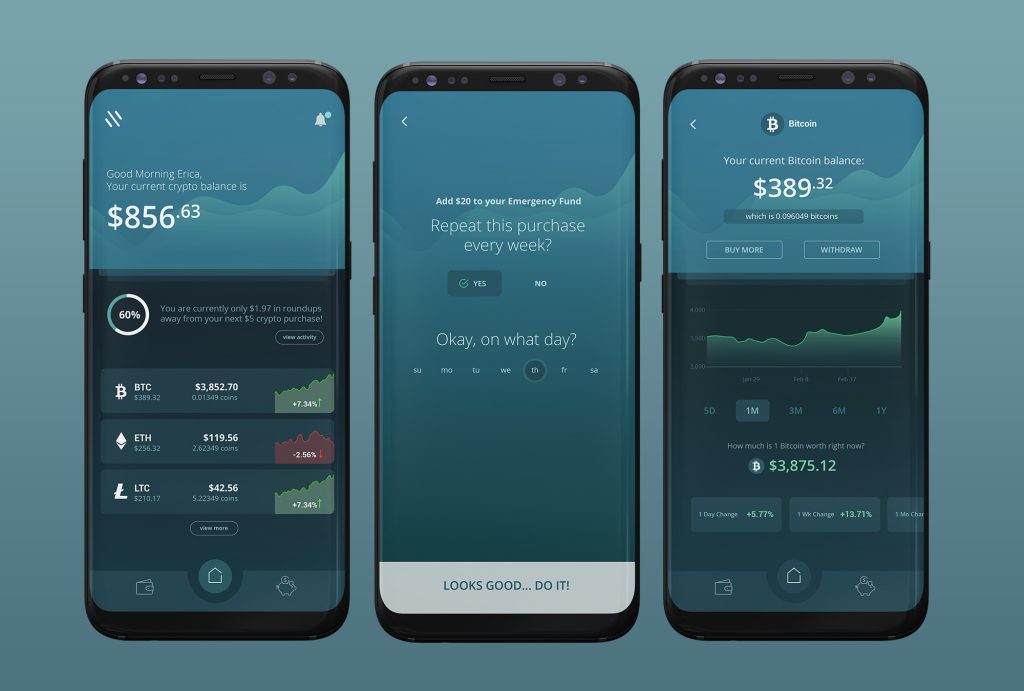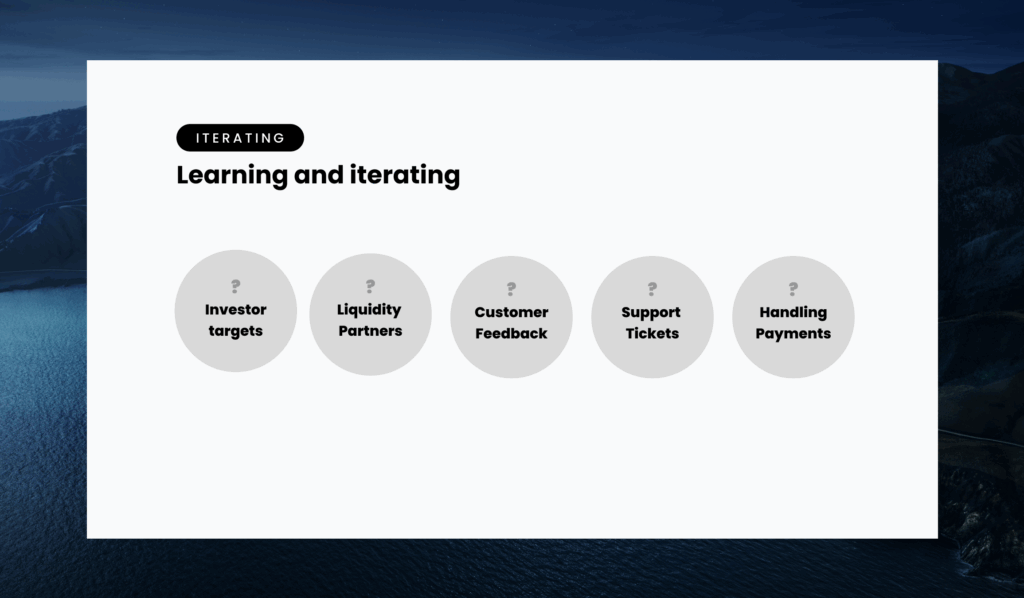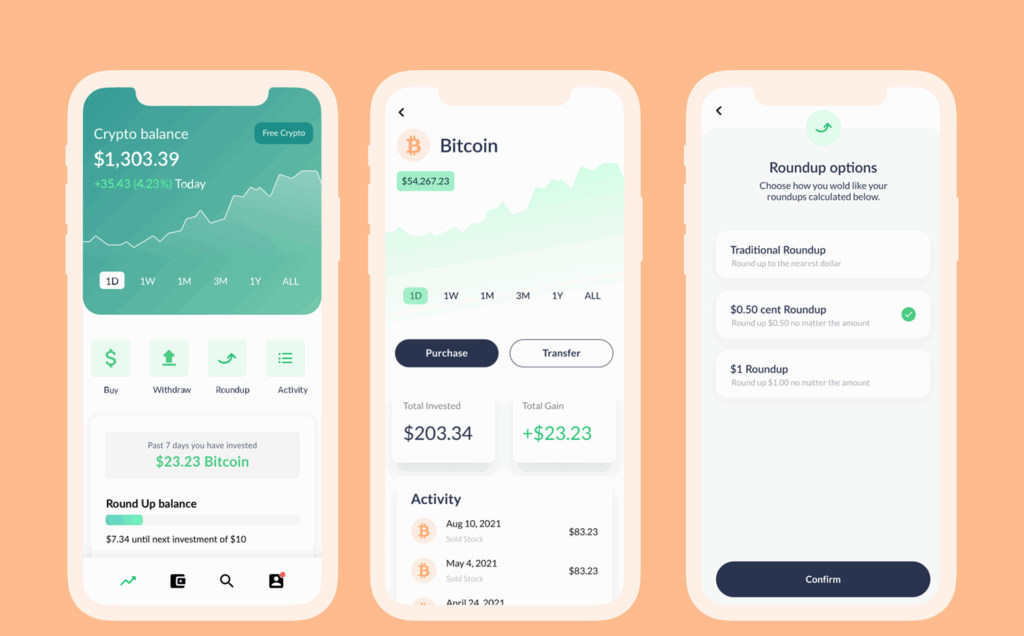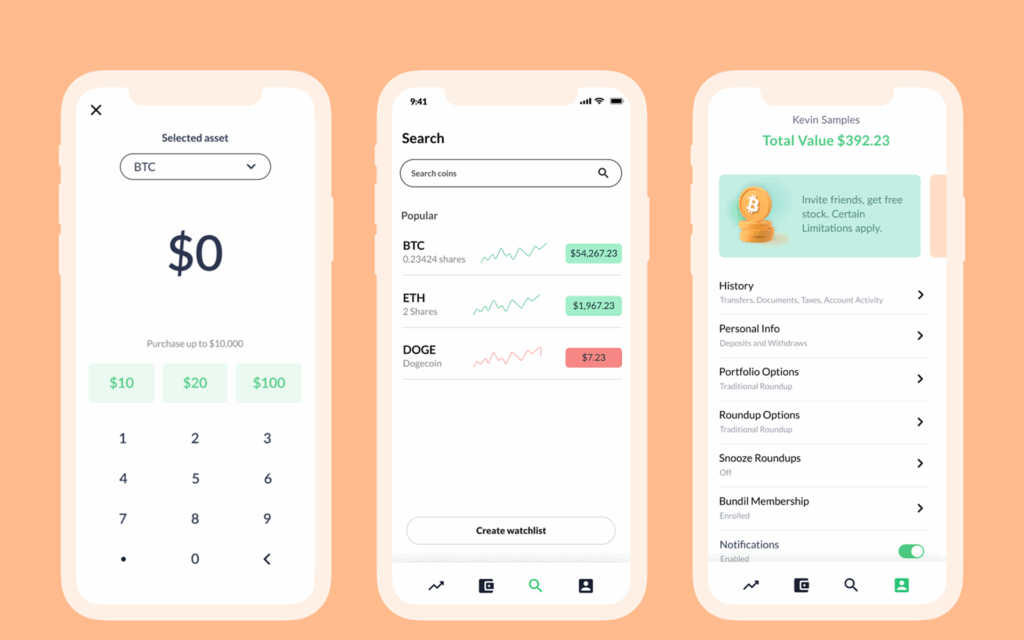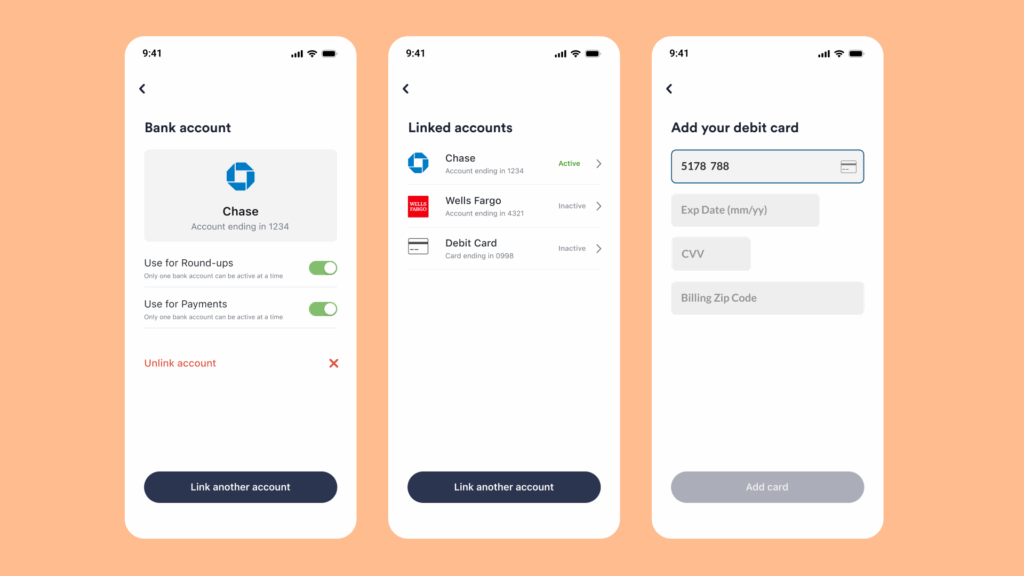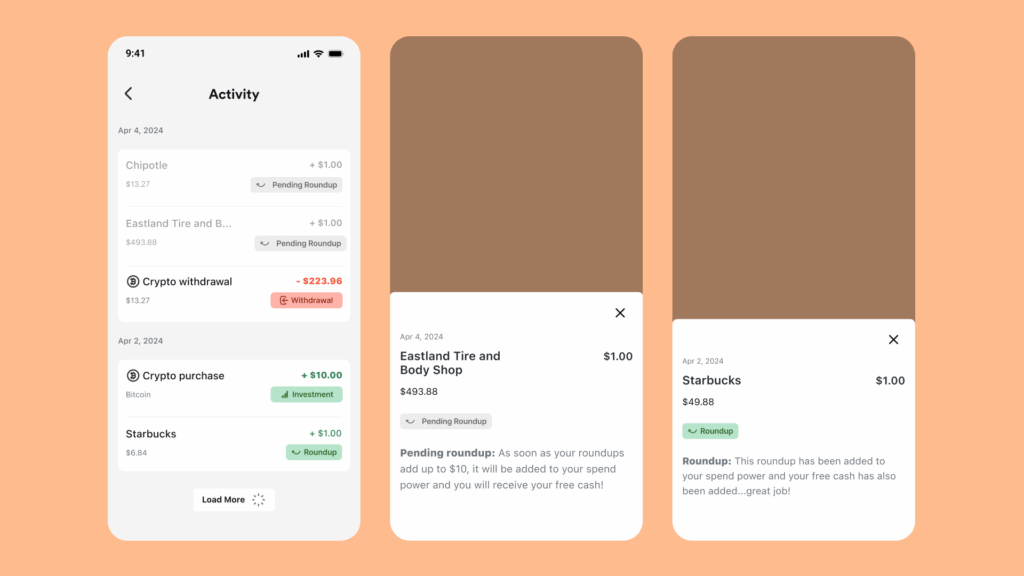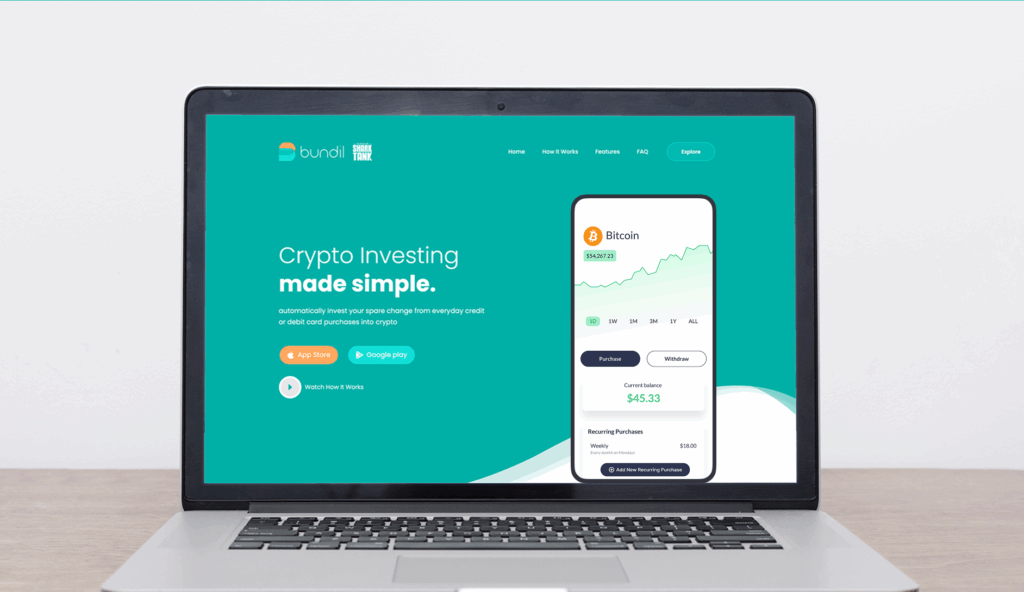Bundil
B2C: Mobile app that allows users to easily invest in cryptocurrency
Project overview
Bundil is a mobile app that allows users to automatically round up their spare change from everyday purchases and invest it into cryptocurrency.
Challenges
Our small team was tasked with creating a mobile application that would democratize cryptocurrency investment by leveraging an innovative “spare change” model. This presented us with multiple complex challenges to overcome:
- Demystifying cryptocurrency concepts for average consumers who may have limited technical knowledge
- Designing a frictionless onboarding experience while collecting essential KYC (Know Your Customer) information required by financial regulations
- Creating an intuitive interface that clearly communicates the round-up threshold and investment mechanics
- Identifying and integrating reliable partners for secure cryptocurrency purchasing and storage
- Navigating complex compliance requirements including KYC and Anti-Money Laundering (AML) regulations
- Overcoming reluctance from payment providers to support cryptocurrency transactions
- Adapting our marketing strategy after major platforms (Facebook, Google, Twitter) implemented cryptocurrency advertising restrictions just weeks before our MVP launch
Discovery and Research
We embraced a comprehensive research-first approach to establish a solid foundation for the project:
- Conducted extensive background research on cryptocurrency technology, market trends, and competitive landscape
- Implemented user interviews with 20-30 potential users across varying levels of crypto familiarity to understand education levels, comfort with technology, and investment motivations
- Created detailed user personas based on interview findings, capturing pain points, goals, and behavioral patterns (even with using data from our research, we were wrong about our IDP)
- Mapped the comprehensive customer journey to visualize all potential touchpoints and interaction opportunities
- Performed exhaustive research on available tools, APIs, and potential integration partners to facilitate our desired user experience
Definition and Planning Phase
With research insights in hand, we transitioned to defining the structure of the application:
- Developed meticulously detailed flow charts for each stage of the user journey, considering all possible paths and edge cases
- Collaborated closely with newly hired developers to validate technical feasibility of proposed flows
- Created comprehensive user stories to capture functionality requirements from the user’s perspective
- Established clear acceptance criteria for each feature to ensure alignment between design and development
Design Phase
Our iterative design process followed UX best practices:
- Translated user stories into initial wireframes to quickly explore layout options without aesthetic distractions
- Progressed to low-fidelity designs to refine information architecture and interaction patterns
- Expanded our design team to accelerate the creation of high-fidelity mockups that incorporated our visual identity
- Applied visual hierarchy principles using size, position, and color to guide users’ attention to critical information
- Implemented progressive disclosure techniques during onboarding to prevent cognitive overload
Roundup Threshold
We could not take every $0.27 or $0.62 and purchase crypto with it…the fees would be too high. So we decided on a round up threshold.
We would calculate roundups server-side and show the use how much more they would need to roundup before an actual crypto purchase was made.
Although it was a great technical/cost solution, we eventually had difficulty with users understanding the threshold roundup concept and had to test different UI options.
Validation and Testing
We prioritized user feedback throughout the design process:
- Created interactive prototypes using high-fidelity designs for comprehensive user testing
- Conducted multiple rounds of usability testing with participants spanning from crypto-curious beginners to experienced enthusiasts
- Documented user pain points, expectations, and suggestions for improvement
- Iteratively refined designs based on testing insights, ensuring the interface addressed real user needs
Implentation & Iteration
Our commitment to quality extended through development and beyond:
- Facilitated smooth developer handoff with detailed documentation and specifications
- Remained actively involved during development to address emergent challenges
- Made strategic UI and UX adjustments based on integration requirements and technical constraints
- Continuously analyzed user data and feedback to inform ongoing improvements
- Executed two complete rebuilds to optimize our integration with liquidity and payment providers
- Refined user personas based on actual usage data, which revealed an older-than-anticipated demographic
Streamlined Onboarding Experience
We implemented a thoughtfully designed onboarding flow that balanced compliance requirements with user experience:
- Adopted a progressive question-by-question approach to prevent overwhelming users
- Incorporated clear progress indicators to set expectations and reduce abandonment
- Strategically bifurcated the onboarding process into two distinct phases
- Initially collected only essential information needed to begin investing
- Deferred the more involved KYC/AML verification until withdrawal, allowing users to experience value before completing additional requirements
Intuitive User Interface
Our visual design leveraged established UX principles to enhance usability:
- Applied size and location hierarchy to create natural visual flow and highlight important information
- Utilized strategic color highlights to draw attention to critical data points and action items
- Designed consistent interaction patterns to build familiarity and reduce cognitive load
- Incorporated clear, jargon-free language to make cryptocurrency concepts accessible
- Ensured scannable layouts that allowed users to quickly comprehend information on each screen
Continuous Refinement
We embraced an iterative approach to product development:
- Updated the color palette to improve visual clarity and energy
- Refreshed the logo to better align with our evolving brand identity
- Incorporated user feedback to enhance overall experience and functionality
- Regularly analyzed user behavior to identify opportunities for improvement
- Adjusted features based on emerging usage patterns and user needs
Innovative Marketing Approach
We pivoted quickly to overcome marketing restrictions:
- Leveraged high-profile appearance on Shark Tank to generate awareness
- Developed comprehensive influencer marketing campaigns targeting relevant audiences
- Identified and utilized alternative marketing channels beyond restricted platforms
- Created educational content to address common questions and build trust
Results and Insights
The development of Bundil demonstrated both the challenges and rewards of creating user-centered experiences for emerging technologies. Through rigorous application of the UX design process and continuous adaptation, we transformed a complex financial technology into an accessible tool for everyday users.
One of our most valuable lessons came from post-launch data analysis, which revealed that our actual user base skewed significantly older than anticipated by our initial persona research.
This insight prompted us to refine our personas and adjust our design approach to better serve our actual users, highlighting the importance of validating assumptions with real-world data.

